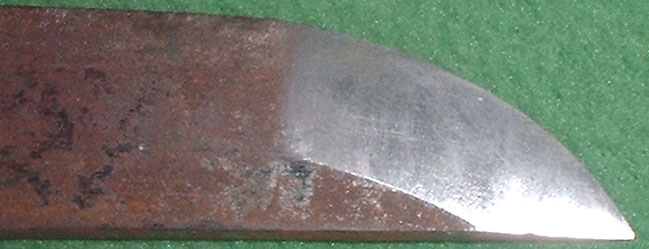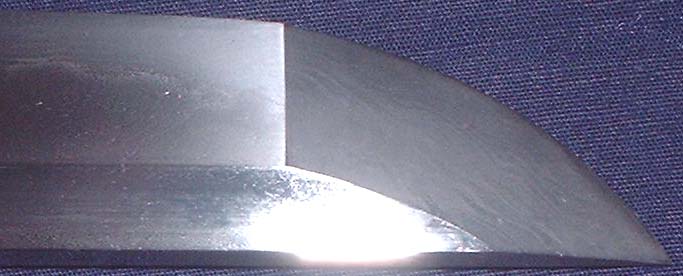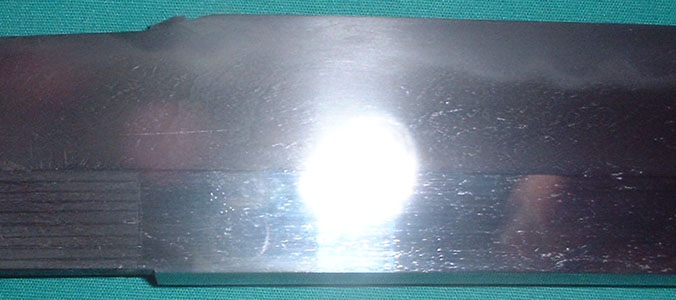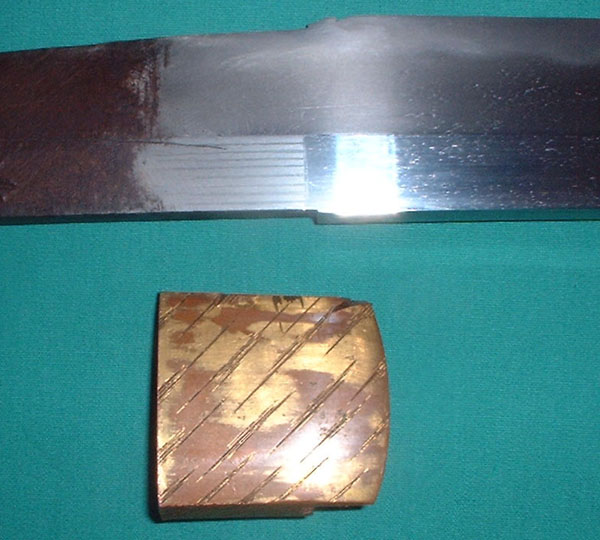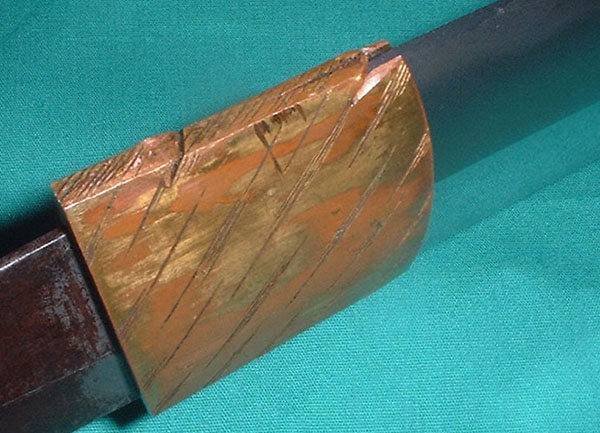amigos aqui les dejo el texto y las imagenes originales de la web USAGIYA , creo que las figuras hablan por si mismas; respecto a los tipos de perfiles y estilos de hojas.
un abrazo. Roberto.
SHINOGI-ZUKURI
The most general style for TACHI/KATANA and WAKIZASHI (long swords).
(=>
kissaki types in shinogi-zukuri style)
1) The ridge line (shinogi) is in normal height.

2) The ridge line is higher.
 HIRA-ZUKURI
HIRA-ZUKURI
The most general style for TANTO.
 SHOBU-ZUKURI
SHOBU-ZUKURI
It is like SHINOGI-ZUKURI, but without YOKOTE line. an example:
Wakizashi, Shikkake
 KIRIHA-ZUKURI
KIRIHA-ZUKURI
Usually in the case of the blades without curvature before 9th century.
1) The blade has YOKOTE line.

2) The blade does not have YOKOTE line.
 KATA-KIRIHA-ZUKURI
KATA-KIRIHA-ZUKURI
1) One side is KIRIHA-ZUKURI, another side is HIRA-ZUKURI. an example:
Naohiro3

2) One side is KIRIHA-ZUKURI, another side is SHINOGI-ZUKURI. an example:
Katana, Uda

3) One side is KIRIHA-ZUKURI, another side is SHOBU-ZUKURI.
 KANMURI-OTOSHI-ZUKURI
KANMURI-OTOSHI-ZUKURI
The thickness on the back becomes thinner from the half of the blade towards the tip.
1) The base is SHINOGI-ZUKURI.
an example:
Naohiro2
In the case of
NAGINATA, this type or UNOKUBI-ZUKURI(1) is common.

2) The base is HIRA-ZUKURI.
an example:
Naohiro5
 UNOKUBI-ZUKURI
UNOKUBI-ZUKURI
It is similar to the KANMURI-OTOSHI-ZUKURI, but the back turns to thick near the KISSAKI.
1) The base is SHINOGI-ZUKURI.
In the case of
NAGINATA, this type or KANMURI-OTOSHI-ZUKURI(1) is common.
an example:
Naohiro1

2) The base is HIRA-ZUKURI.
 MOROHA-ZUKURI
MOROHA-ZUKURI
A double edged blade that is asymmetric for the ridge line. an example:
Naohiro8
 OSORAKU-ZUKURI
OSORAKU-ZUKURI
The KISSAKI part is bigger than the half of the blade's length.
Usually in TANTO type. an example:
Naohiro6
 KISSAKI-MOROHA-ZUKURI
KISSAKI-MOROHA-ZUKURI
The forward part of the blade is double edged. an example:
Naohiro4
A curved blade type is especially called "Kogarasu-maru" style.
"Kogarasu-maru" is a name of one very famous sword in curved kissaki-moroha-zukuri.
It was a treasure of the Taira family in 12th century, and now in the imperial collection.
 RYO-SHINOGI-ZUKURI
RYO-SHINOGI-ZUKURI
A symmetric double edged blade.
The cross section is like a diamond.
 HIRA-SANKAKU-ZUKURI
HIRA-SANKAKU-ZUKURI
The cross section is a triangle. Mainly for YARI (lance). an example:
new sword5
another example: tsurugi
sword24


